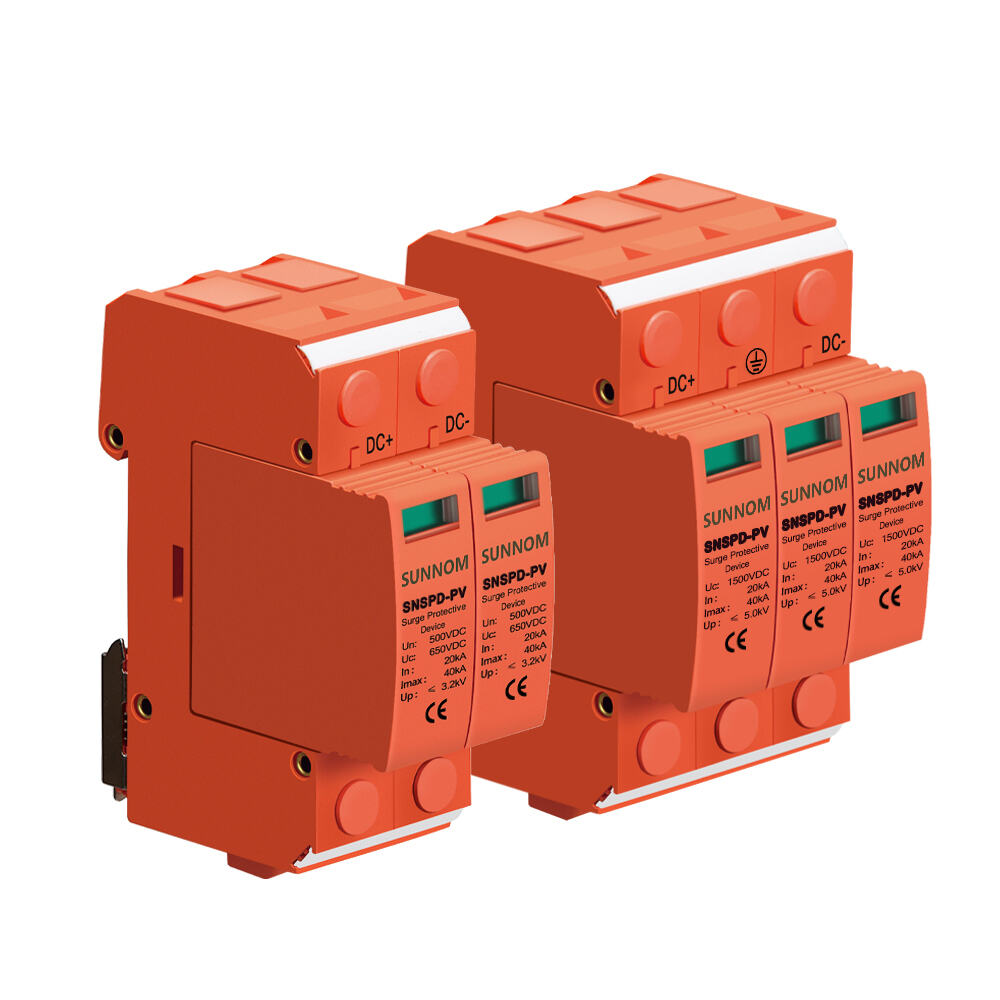Understanding Modern Electrical Protection Solutions
In today's increasingly connected world, protecting electrical systems from unexpected power surges has become more critical than ever. A surge arrester protector serves as the first line of defense against dangerous voltage spikes that can damage expensive equipment and compromise entire electrical installations. These sophisticated devices have evolved significantly over the years, offering enhanced protection capabilities that safeguard both residential and industrial electrical systems.
Whether you're managing a manufacturing facility or protecting your home's sensitive electronics, implementing proper surge protection is essential. Modern surge arrester protectors combine advanced technology with reliable performance to ensure continuous operation of electrical systems while preventing costly equipment failures and downtime.
The Science Behind Surge Protection Technology
Core Components and Operating Principles
At the heart of every surge arrester protector lies sophisticated technology designed to detect and divert excess voltage away from protected equipment. The main component typically consists of metal oxide varistors (MOVs) or similar materials that can quickly respond to voltage fluctuations. These components work by providing a low-resistance path for surge currents while maintaining high resistance during normal operating conditions.
The surge arrester protector continuously monitors the electrical system's voltage levels. When a surge occurs, the device instantly switches to its protective mode, channeling the excess energy safely to the ground. This rapid response happens in microseconds, ensuring that connected equipment remains unaffected by potentially damaging voltage spikes.
Advanced Protection Mechanisms
Modern surge arrester protectors incorporate multiple stages of protection, often referred to as cascaded protection. This layered approach ensures comprehensive coverage against various types of electrical disturbances. The primary stage handles large surge currents, while subsequent stages provide fine-tuned protection for sensitive electronic equipment.
These devices also feature thermal disconnection mechanisms that prevent overheating and ensure safe operation even during sustained overvoltage conditions. Advanced models include diagnostic capabilities that monitor the device's health and alert users when replacement is needed.
Benefits of Installing Surge Arrester Protectors
Equipment Longevity and Protection
Installing a surge arrester protector significantly extends the lifespan of electrical equipment by preventing cumulative damage from repeated small surges and protecting against catastrophic failure from large voltage spikes. This protection is particularly valuable for expensive industrial equipment, sensitive medical devices, and sophisticated home electronics.
The investment in quality surge protection often pays for itself many times over by preventing equipment replacement costs and avoiding unexpected downtime. Many insurance companies even offer reduced premiums for facilities that implement comprehensive surge protection systems.
Operational Continuity and Reliability
Business operations rely heavily on continuous, stable power supply. A surge arrester protector helps maintain operational continuity by preventing disruptions caused by power quality issues. This is especially crucial in facilities where even momentary interruptions can result in significant financial losses or safety concerns.
The reliability offered by surge protection systems extends beyond immediate equipment protection. By preventing system failures and reducing maintenance requirements, these devices contribute to smoother operations and improved overall facility management.

Installation Considerations and Best Practices
Strategic Placement and Configuration
The effectiveness of a surge arrester protector depends significantly on its placement within the electrical system. Professional installers typically recommend a multi-layered approach, with protection at the main service entrance and additional units at critical points throughout the facility. This coordinated protection strategy ensures comprehensive coverage against both external and internal surge events.
Proper grounding is essential for optimal surge protection performance. The installation must comply with relevant electrical codes and standards, including appropriate conductor sizing and connection methods. Regular inspection and maintenance of grounding systems help maintain protection effectiveness over time.
Selection and Sizing Guidelines
Choosing the right surge arrester protector involves careful consideration of several factors, including the facility's voltage requirements, exposure risk, and equipment sensitivity. The device's voltage protection rating (VPR) and short-circuit current rating (SCCR) must match the installation's specifications.
For industrial applications, surge arrester protectors should be sized according to the facility's exposure level, equipment value, and operational criticality. Residential installations typically require less robust protection, but should still be properly sized to handle common household surge events.
Maintenance and Long-term Care
Regular Inspection Protocols
Maintaining surge arrester protectors requires periodic inspection and testing to ensure continued effectiveness. Visual inspections can identify signs of physical damage or deterioration, while diagnostic testing confirms proper operation. Modern units often include status indicators that simplify monitoring and maintenance procedures.
Documentation of inspection results and maintenance activities helps track device performance over time and plan for timely replacements. This proactive approach prevents protection gaps that could leave equipment vulnerable to surge damage.
Replacement and Upgrade Strategies
Like all protective devices, surge arrester protectors have a finite service life. Regular assessment of protection levels and device condition helps determine optimal replacement timing. Upgrading to newer models may provide enhanced protection features and improved monitoring capabilities.
When planning system upgrades or expansions, it's important to review and adjust surge protection strategies accordingly. This might involve adding protection devices or upgrading existing units to maintain adequate coverage as facility needs evolve.
Frequently Asked Questions
How long does a surge arrester protector typically last?
A quality surge arrester protector typically lasts between 5-10 years under normal conditions. However, this can vary depending on factors such as frequency of surge events, environmental conditions, and quality of power supply. Regular monitoring of status indicators helps determine when replacement is needed.
Can a surge arrester protector be installed as a DIY project?
While some basic plug-in surge protectors can be installed by homeowners, professional installation is strongly recommended for whole-house or industrial surge arrester protectors. This ensures proper integration with the electrical system and compliance with safety codes and warranty requirements.
What's the difference between a surge protector and a surge arrester protector?
While these terms are often used interchangeably, surge arrester protectors typically refer to more robust devices designed for installation at the service entrance or distribution panel level. They offer higher capacity protection compared to plug-in surge protectors and are integral components of comprehensive electrical protection systems.




